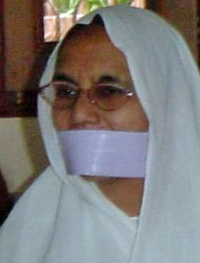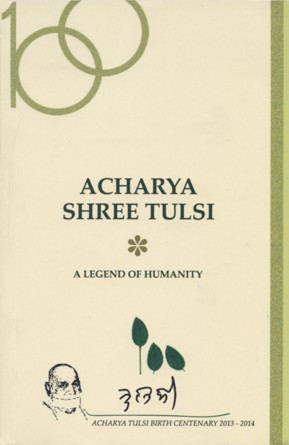 Acharya Tulsi was the first to promote the idea of using Anuvrat as a realistic movement of social reform. The small vows initially seemed to be very simple to follow, but later people found it difficult to adhere to them as they were wedded to their old habits. Many people went to Acharya Tulsi for a solution for being stuck in addictive behavioral patterns. Acharya Tulsi asserted that a radical attitudinal change in one's life will not be possible merely through the vows of Anuvrat. Change must be accompanied by another effective tool. Acharya Tulsi shares this experience:
Acharya Tulsi was the first to promote the idea of using Anuvrat as a realistic movement of social reform. The small vows initially seemed to be very simple to follow, but later people found it difficult to adhere to them as they were wedded to their old habits. Many people went to Acharya Tulsi for a solution for being stuck in addictive behavioral patterns. Acharya Tulsi asserted that a radical attitudinal change in one's life will not be possible merely through the vows of Anuvrat. Change must be accompanied by another effective tool. Acharya Tulsi shares this experience:
I began noticing that many people were unable to keep their vows, particularly when it came to psychological addictions. This problem was demanding a method of inner purification that could give them the requisite strength.
Acharya Shree was staying in Udaipur during the year of 1962. After a series of reflections, Acharya Tulsi suggested Yuvacharya Mahapragya to research and to refine a set of meditation techniques which had been long lost and forgotten. Surprisingly, the Jain tradition was not widely known to have any such system. Yuvacharya Mahapragya scoured the Jain scriptures and found a volume of references on meditation. By the mid-1970s he had succeeded in developing a technique of meditation from the Jain tradition that blended well with modern human psychology. The Yuvacharya used himself as the agent for developing this new and holistic form of meditation. After a long span of experiments and experiences on and within himself, he evolved a new technique of meditation that has been designated as 'Preksha Dhyan'.
Preksha means to perceive deeply within. The meditative technique involves engaging the mind fully in the perception of the subtle, internal and innate phenomenon of consciousness to control passions and purify emotion.
Preksha is a way to perceive oneself. It is not an easy task to see yourself through yourself. Therefore, we choose the breath, body, psychic centers, contemplations and sensations as foundations in our journey to reach internal perception. The discovery of Treksha Dhyan' has revitalized the ancient practice of Jain Sadhana which had been forgotten. Preksha Meditation is one of the most important techniques of meditation prevalent in India. This process of meditation includes the exercise of yogasana (Physical exercise), Kayotsarg (relaxation), Pranayam (breathing exercises), Anupreksha (contemplation), and Leshya Dhyan (perception of color).
Preksha Dhyan is a unique technique for achieving tranquility. It is a novel and effective method of meditation for attitudinal changes, behavioral modification and integral development of the personality. It is based on the wisdom of ancient philosophy and has been formulated in terms of modern scientific concepts. Sencere and diligent practice of Preksha Meditation gives us physical, emotional and mental health.
In Preksha Meditation, it is said that karma creates our emotions and our emotions in turn generate our hormonal secretions. In other words, the glands which secrete the hormones act according to our feelings. Thus, our feelings depend upon our hormones. As long as our hormones are not changed, the nature of a person cannot be changed. Thus, by extension, society cannot be transformed. Medical science has discovered that feelings and emotions are triggered by our endocrine glands. The hormones secreted by our endocrine system activate desires and negative moods. In Preksha Meditation, there is a process of concentrating on our psychic centers. If a person concentrates his mind on these important centers of the body, he can alter his hormones to a positive end.
 Sadhvi Vishrut Vibha
Sadhvi Vishrut Vibha
